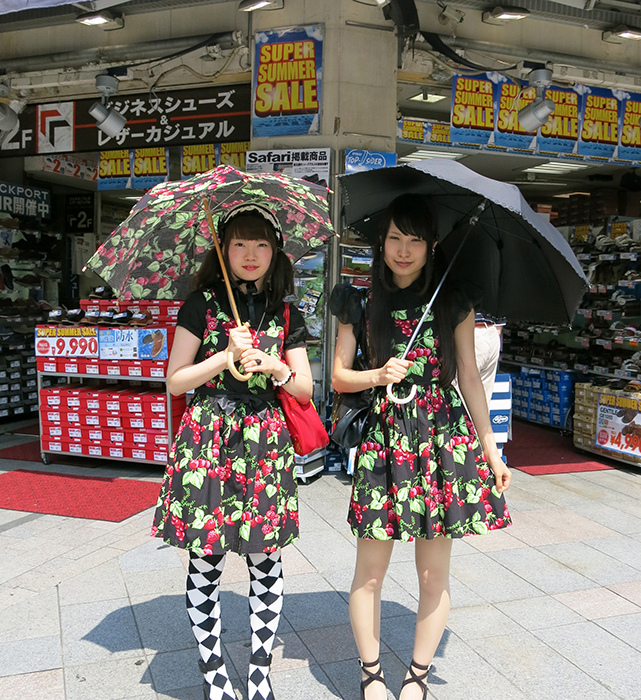
Parasols or Umbrellas?
Parasols are popping up everywhere this summer. They’re incredibly ladylike and add old fashioned style to a pretty day outfit. At this time of the year there are zillions in Japan, where they are used to keep skin looking pale. In Tokyo they are amazingly popular with everyone from old ladies to young girls – even men can be seen carrying them. These girls were spotted indulging in the niche trend of twin dressing… Perhaps more Twin Peaks than twin parasols?
In the UK, there were parasols aplenty in the Victorian and Edwardian eras. Those aspiring to the upper crust sophistication of a bygone era may carry a parasol to society events such as Henley Royal Regatta – purely for the purposes of posing.
But the accessory comes into its own when the British summer gets really hot, and having a parasol enables the owner to remain serenely cool, like this lady seen aboard a wooden boat at Henley.
Charles Moore, writing in the Spectator says, “The great heat, and the increased concern about skin cancer, has brought about the revival of the parasol. In my childhood, this object was only to be found in Victorian prints and Children’s books like Little Black Sambo. It is an elegant addition to modern London street life.”
The parasol is defined as something that protects from the sun, whereas an umbrella shields from the rain. Curiously, Little Black Sambo’s fine parasol is actually referred to in Helen Bannerman’s book (first published in October 1899) as a ‘beautiful green umbrella.’ This may signify that his umbrella was also waterproof, which would have come in handy for the monsoon rains in southern India, where the book was written.
A true parasol is not designed for wet weather, as it is not rain proof. Perhaps the items we are currently seeing so many of in the UK should actually be called something that reflects their dual functionality. How about umbrasols – or parabrellas?
Read more on the history of the parasol here.

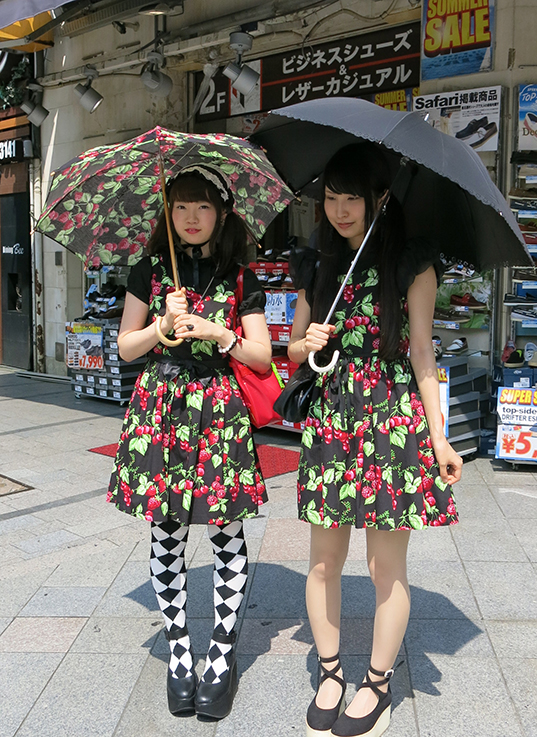
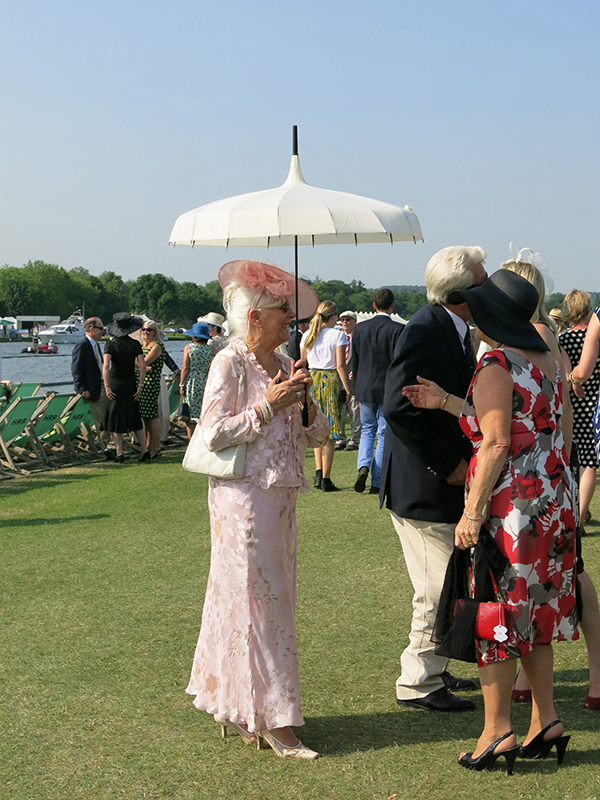
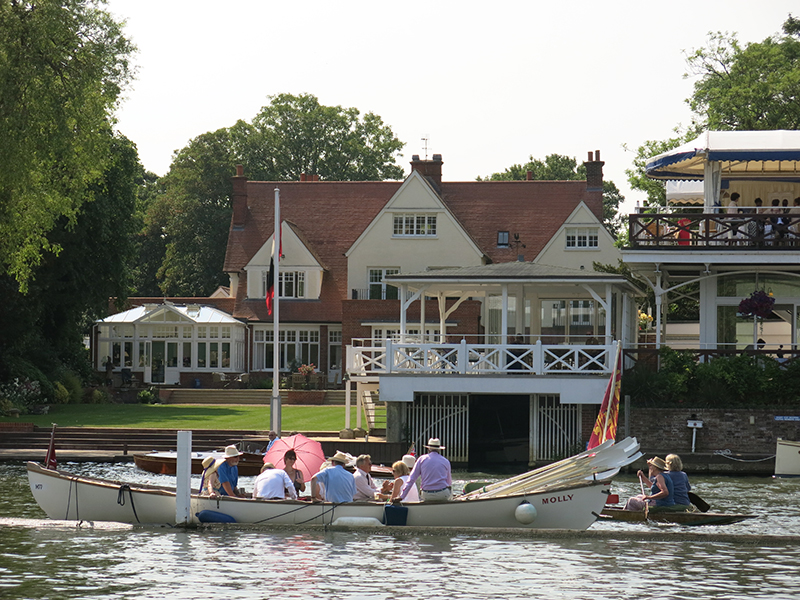
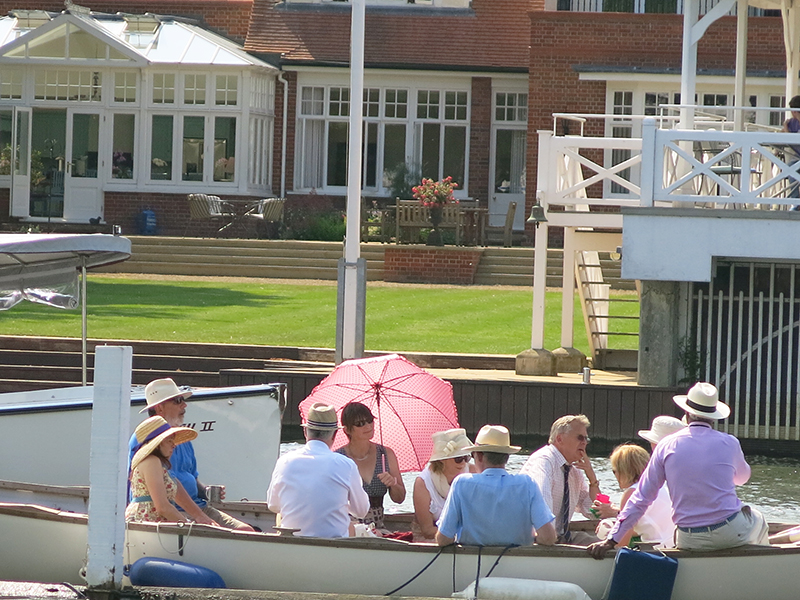
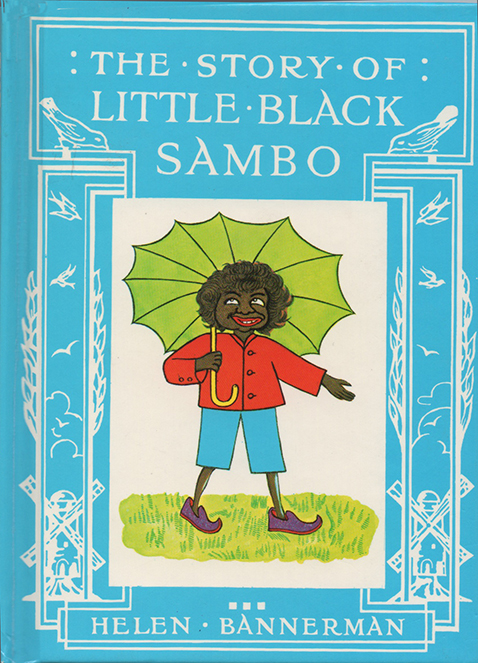
LEAVE A REPLY